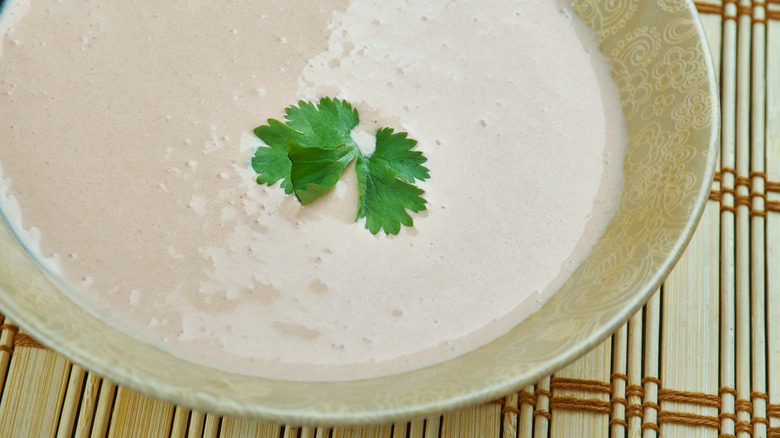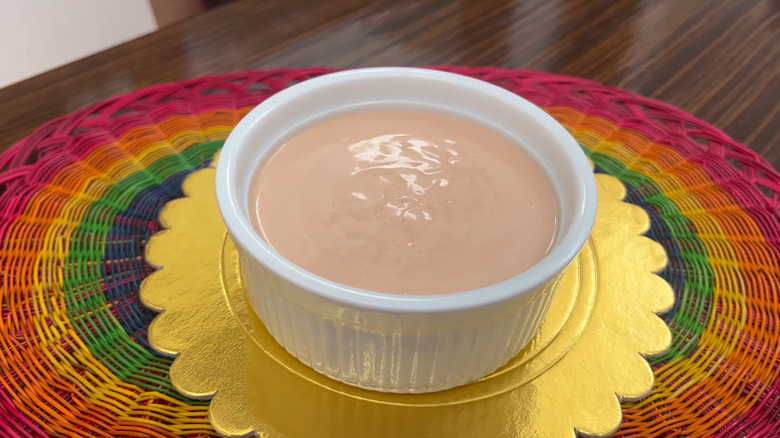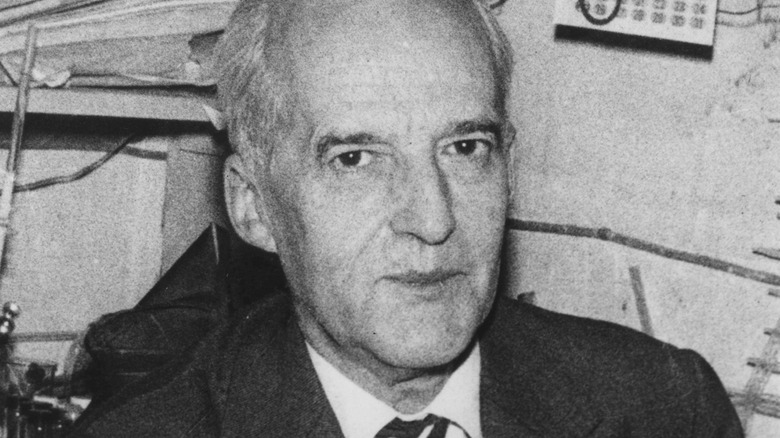Salsa Golf: The Obscure Sauce Created By A Nobel Prize Winner
Argentina's culinary traditions are legion, from the grilled meats known as asado to empanadas, the flaky hand pies stuffed with various fillings such as ground beef and quince jam. You may also be familiar with the Argentine green sauce chimichurri, not to be confused with the Italian green sauce pesto, but have you ever tried another of this South American country's condiments? It's called salsa golf, and it's a tasty pink-colored sauce — a blend of mayonnaise and ketchup, among other ingredients — that pairs well with a variety of foods. It's used in Argentina on everything from steak and hamburgers to empanadas and seafood.
Besides being so versatile, salsa golf is even more impressive for a very different reason. Not many condiments can claim a connection to the world's most prestigious award in science. You see, the man who's credited with inventing the condiment in the 1920s, Luis Leloir, would go on to win the Nobel Prize in chemistry decades after creating the tasty sauce he used to dip his shrimp in.
Salsa golf is a mayo-ketchup mashup
While the name may seem to indicate otherwise, salsa golf is a sauce, not a sport. At its simplest, it's a combination of mayonnaise, ketchup, and lemon juice, but it may also include roasted red peppers, brandy, Worcestershire sauce, Dijon mustard, minced garlic, and spices like paprika, oregano, and cumin. The sauce could be described as a kind of offshoot of ketchup, which has its own bizarre evolution, beginning life as a Chinese fermented fish sauce before becoming the tomato-based condiment we dip our french fries in today.
Like ketchup, salsa golf has undergone several changes of its own and morphed from a simple homemade sauce to commercially available versions from such heavy-hitters as Hellmann's. Salsa golf is not the only condiment to be based on a ketchup (or other tomato product)-mayonnaise mash-up. There's Russian dressing, Utah's fry sauce, a British condiment called Marie Rose, and the Belgium's sauce andalouse, to name a few. Still, none have quite the same pedigree as salsa golf.
Nobel prize winner Luis Leloir brought a chemist's mind to condiments
Salsa golf was born of culinary boredom with another condiment: mayonnaise. As the accepted story goes, one summer day in the mid-1920s, Luis Leloir — then a young medical student – was with friends at the Golf Club in the Argentine seaside resort of Mar del Plata. Leloir was enjoying a platter of shrimp, but he was unhappy with the plain mayonnaise that accompanied it. He reportedly asked the waiter for some other ingredients and whipped up a brand new condiment that his friends christened salsa golf in honor of the club where the sauce was born.
Leloir was born in Paris, France, in 1906. His Argentine parents moved the family back to the South American country when he was 2. After earning his medical degree, Leloir pursued a career in biochemistry. Much later, when he was short on funds for his research, he joked that salsa golf could've helped subsidize his scientific work. "If only I had patented that sauce, we'd have a lot more money now," he quipped (via "Crucible of Science: The Story of the Cori Laboratory"). In 1970, the Nobel Committee awarded Leloir its prestigious award "for his discovery of sugar nucleotides and their role in the biosynthesis of carbohydrates," per the Nobel Prize website. It's safe to say no other condiment inventor has garnered the same level of acclaim.


